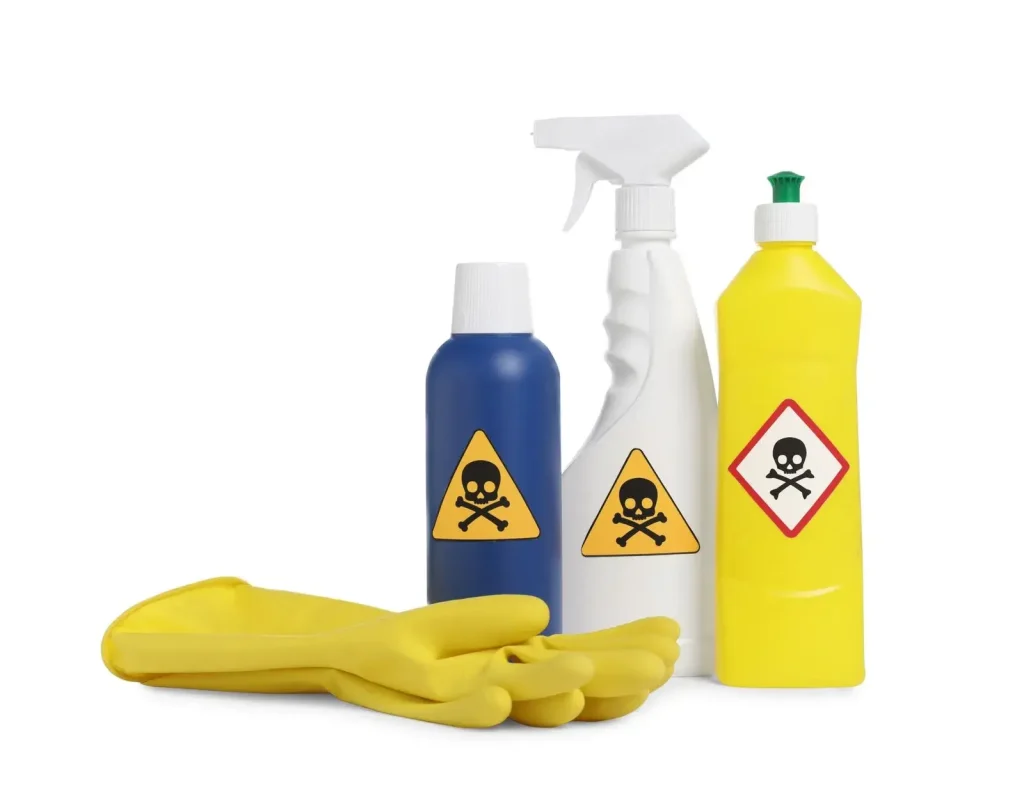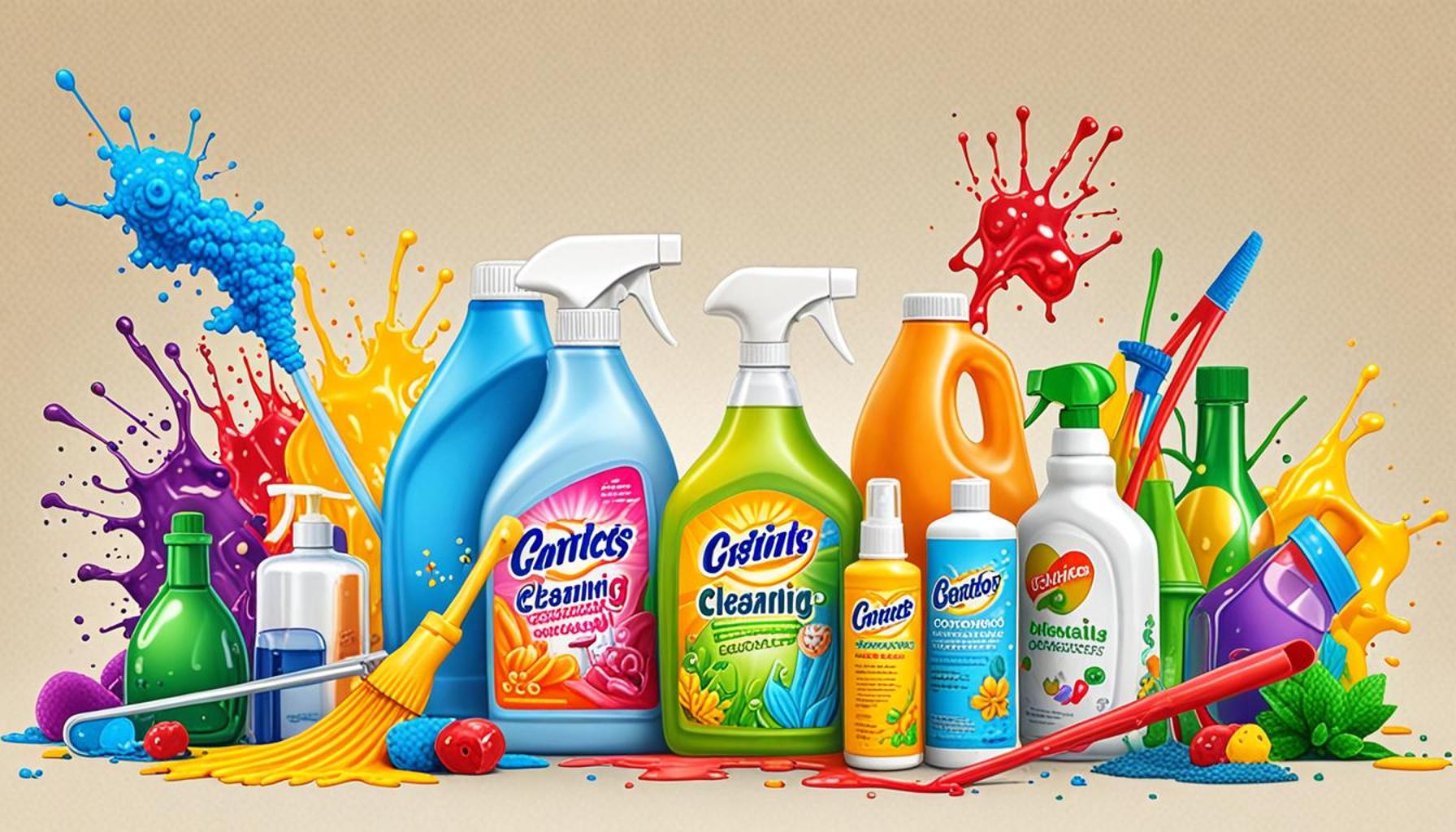The Impact of Scented Cleaning Products on Indoor Air Quality and Health

The Allure and Impact of Scented Cleaning Products
The appeal of scented cleaning products is undeniable. They promise not just cleanliness but also a sensory experience, transforming mundane chores into enjoyable tasks. However, this pleasurable aroma often masks complex issues associated with their ingredients and effects on indoor air quality and health. As consumers become increasingly aware of what goes into their homes, it’s vital to take a closer look at the duality of these products.
Unmasking Volatile Organic Compounds (VOCs)
Volatile Organic Compounds (VOCs) are organic chemicals that evaporate into the air and can come from various household items, including scented cleaners. According to the Environmental Protection Agency (EPA), exposure to VOCs may lead to a range of health issues, including headaches, dizziness, and even long-term respiratory conditions. For instance, a study published by the University of California, Berkeley, found that common cleaning products release VOCs that can linger in indoor air, significantly affecting those with pre-existing conditions like asthma.
Understanding Allergens and Irritants
Moreover, the addition of artificial fragrances to cleaning products poses another concern. Aromatic compounds can act as allergens and irritants for many individuals. The Asthma and Allergy Foundation of America notes that an increasing number of people report allergic reactions to scented products, which can trigger asthma attacks and contribute to eye irritation and respiratory distress. For those with heightened sensitivities, the aromatic appeal of these products can quickly sour into discomfort and health risks.
Examining Long-term Exposure Risks
Perhaps one of the most pressing concerns is the impact of long-term exposure to these scented cleaners. Prolonged use not only affects personal health but may also contribute to broader issues of indoor air quality. Research suggests that consistent use of fragrance-laden products can accumulate harmful chemicals in the home environment, raising the risk of developing chronic conditions. The American Lung Association emphasizes that a well-ventilated home is essential for maintaining healthy air; when cleaning agents add layers of VOCs and irritants, this easily becomes counterproductive.
A Call for Reassessment
So, are we trading short-term satisfaction for potential health risks? The evidence suggests that we may need to reconsider our cleaning habits and the products we choose. While scented cleaners may create an illusion of cleanliness and comfort, the underlying chemicals can disrupt the balance of our indoor ecosystems. This awareness invites us to explore alternatives—such as unscented or naturally derived cleaning agents—that prioritize health and well-being while still providing the effectiveness required for a clean home.

In summary, the burgeoning market of scented cleaning products presents an interesting paradox. While they promise to enhance our daily lives with pleasant fragrances, a closer examination of their ingredients reveals potential threats to our air quality and health. As consumers, we have the power to make informed choices and advocate for safer products, ensuring a cleaner and healthier indoor environment for ourselves and future generations.
DISCOVER MORE: Click here to learn about eco-friendly cleaning products
The Hidden Dangers of Scented Cleaners
While the pleasant smell of scented cleaning products can make a home feel fresher, the truth is that these fragrances often contribute to notable indoor air quality issues. In the quest for cleanliness, many households fall prey to the marketing promise of a “cleaner” home; however, a comprehensive look into these products unveils a different narrative. Numerous studies have highlighted that the air we breathe indoors can be far more polluted than outdoor air, raising serious questions about the role scented cleaning products play.
The Complexity of Indoor Air Pollution
Indoor air pollution can be associated with numerous sources, including cleaning products, paint, and furniture. The EPA has identified that indoor air pollution is among the top five environmental health risks. When scented cleaners are employed, they introduce a variety of hazardous substances into the home. These substances include enhanced VOC emissions, which can result from both the base ingredients of the cleaners and the synthetic fragrances added for scent.
The potential hazards are particularly concerning for vulnerable populations, such as children, the elderly, and those with pre-existing health conditions. Here are some key statistics related to indoor air quality concerns stemming from household products:
- 50% of Americans are exposed to unhealthy levels of indoor air pollutants.
- Over 40% of adults report respiratory problems exacerbated by indoor air contaminants.
- Children are at a greater risk, with studies indicating that 25% of childhood asthma cases may be linked to household air quality.
Popular Ingredients to Watch Out For
Understanding the components of scented cleaning products can further illuminate their potential dangers. Common ingredients found in these products include:
- Phthalates: Often used to enhance fragrance longevity, phthalates are known endocrine disruptors that can affect hormone levels and reproductive health.
- Formaldehyde: A preservative that can cause irritation to the eyes, nose, and throat, and has been linked to more severe respiratory conditions.
- Fragrance mixtures: These often contain undisclosed chemicals—approximately 3,000 substances classified as fragrance ingredients can trigger allergies and worsen asthma symptoms.
As personal health awareness grows, consumers are encouraged to delve deeper into understanding the implications of their cleaning product choices. The seductive allure of delightful scents may come with risks that far outweigh the psychological comfort derived from a fragrant home. It raises a pivotal question: should cleanliness be measured merely by smell, or should we consider the broader impacts on our health and well-being? This inquiry prompts a critical examination of consumer practices and home environments.
Exploring Safer Alternatives
Given the potential hazards associated with scented cleaning products, exploring alternatives is becoming increasingly necessary. Unscented or naturally derived cleaning agents offer a path toward maintaining hygiene without compromising air quality or health. By shifting toward environmentally friendly and safer options, households can create a home environment that balances cleanliness with well-being.
In conclusion, balancing the desire for an aromatic home with health considerations poses a challenge. The revelations surrounding the impact of scented cleaning products on indoor air quality illuminate the need for informed consumer behavior and advocacy for safer alternatives.
| Category | Characteristics & Effects |
|---|---|
| Volatile Organic Compounds (VOCs) | Many scented cleaning products release VOCs, which can significantly reduce indoor air quality and lead to various health issues. |
| Respiratory Issues | Exposure to scented cleaning products can trigger asthma, respiratory irritation, and other chronic conditions. |
| Chemical Sensitivity | Certain individuals may develop chemical sensitivity, experiencing headaches or skin irritations from common fragrances. |
| Environmental Impact | The production and disposal of scented cleaning products often lead to environmental pollution, affecting both indoor and outdoor air quality. |
When discussing the impact of scented cleaning products on indoor air quality and health, it is vital to highlight the potential hazards posed by these everyday items. The presence of volatile organic compounds (VOCs) in many scented cleaning products contributes to poor indoor air quality. VOCs are known to cause various respiratory issues, increasing the prevalence of asthma and providing irritants to our airways. Not only do these compounds affect physical health, but some individuals can also develop chemical sensitivity, facing a range of neurological symptoms due to common fragrances found in these products. Further compounding these issues is the environmental impact stemming from their production and disposal, leading to a ripple effect on both indoor and outdoor air quality. Understanding these ramifications encourages consumers to think critically about the products they use and their broader implications.
DON’T MISS: Click here for sustainable DIY repair tips
Health Implications of Lingering Fragrances
The health consequences of using scented cleaning products extend beyond mere discomfort; they may manifest in various acute and chronic health issues that warrant serious consideration. Understanding the relationship between scented cleaners and their effects on overall health is essential in navigating the landscape of indoor air quality. For instance, volatile organic compounds (VOCs), commonly found in these products, can lead to significant health repercussions when inhaled regularly over extended periods.
Respiratory Issues and Allergies
Individuals with asthma or other respiratory conditions may find that scented cleaning products exacerbate their symptoms. Research conducted by the American Journal of Respiratory and Critical Care Medicine indicates that individuals exposed to such products reported a higher incidence of respiratory irritation and exacerbated asthma attacks. Indeed, the scents we often associate with cleanliness can translate into distressing symptoms, including coughing, wheezing, and even asthma exacerbation.
A study from the University of California, Berkeley found that approximately 29% of participants tested</strong reacted negatively to one or more scented products. This is especially concerning given that as many as 24 million Americans currently suffer from asthma. The emotional and physical burden placed on individuals with respiratory conditions must not be overlooked.
Impact on Mental Health and Well-Being
While the olfactory experience has the power to uplift moods and evoke nostalgia, the psychological impacts of synthetic scents should be scrutinized. Exposure to certain chemicals found in scented cleaning products has been linked to increased anxiety and stress levels. A significant finding from the National Institute of Environmental Health Sciences suggests that fragrances can modify brain activity, sometimes resulting in irritability and diminished cognitive performance.
In addition, recent studies reveal that specific fragrance compounds can trigger migraines and headaches in susceptible individuals, further complicating the relaxing environment many seek through the use of scented products.
The Long-Term Effects of Chemical Exposure
Long-term exposure to synthetic fragrances and the chemicals associated with scented cleaning products raises alarms about more severe health risks. The Environmental Protection Agency (EPA) warns that regular inhalation of indoor air laden with VOCs can lead to chronic respiratory diseases and even long-term neurological effects. As these compounds accumulate in the environment, their impact on human health evolves into a multifaceted issue that continues to spark debate among public health officials and scientists alike.
Additionally, certain chemicals have been linked to developmental concerns, especially in children. With their still-developing bodies, children are particularly vulnerable to the negative effects of indoor air pollution. For example, the World Health Organization highlights the correlation between children’s exposure to chemicals like phthalates and adverse developmental outcomes, including lower IQ and behavioral issues.
In light of these concerns, consumers are increasingly motivated to seek information about the products they bring into their homes. Awareness regarding the potential long-term impacts of scented cleaning agents fosters a more health-conscious approach, prompting a shift toward less harmful alternatives. The challenge lies in reconciling the desire for a clean and pleasant-smelling home with awareness of the possible risks that accompany fragrant cleaning solutions.
DISCOVER MORE: Click here to learn about the impact of minimalism on cleaning efficiency</p
Conclusion: Navigating the Complexities of Scented Cleaning Products
As consumers increasingly rely on scented cleaning products to create inviting and hygienic living spaces, it becomes crucial to understand their complex impact on indoor air quality and overall health. The research overwhelmingly points to a troubling correlation between the use of these products and various health issues, including respiratory problems, cognitive impairments, and long-term chemical exposure risks. The presence of volatile organic compounds (VOCs) in these cleaner formulations not only compromises air quality but can also lead to acute and chronic health consequences, raising alarms among public health experts.
Moreover, the hidden emotional and psychological effects of synthetic fragrances are alarming. With their potential to increase anxiety, trigger headaches, and impact mental well-being, it’s evident that what often promises comfort and cleanliness could instead become a source of discomfort for many. As the Environmental Protection Agency (EPA) and other health organizations emphasize, long-term exposure is a significant concern, especially for vulnerable populations such as children and individuals with pre-existing respiratory conditions.
In light of this knowledge, a shift in consumer behavior is necessary. Awareness is the first step toward making informed choices about the cleaning products we use at home. By exploring eco-friendly alternatives, prioritizing natural substances, and fostering a deeper understanding of label contents, consumers can pave the way for a healthier indoor environment. Ultimately, it is paramount to balance the desire for a pleasantly scented home with the potential health impacts associated with synthetic fragrances. Only then can we truly achieve the optimal harmony of cleanliness and well-being in our living spaces.


